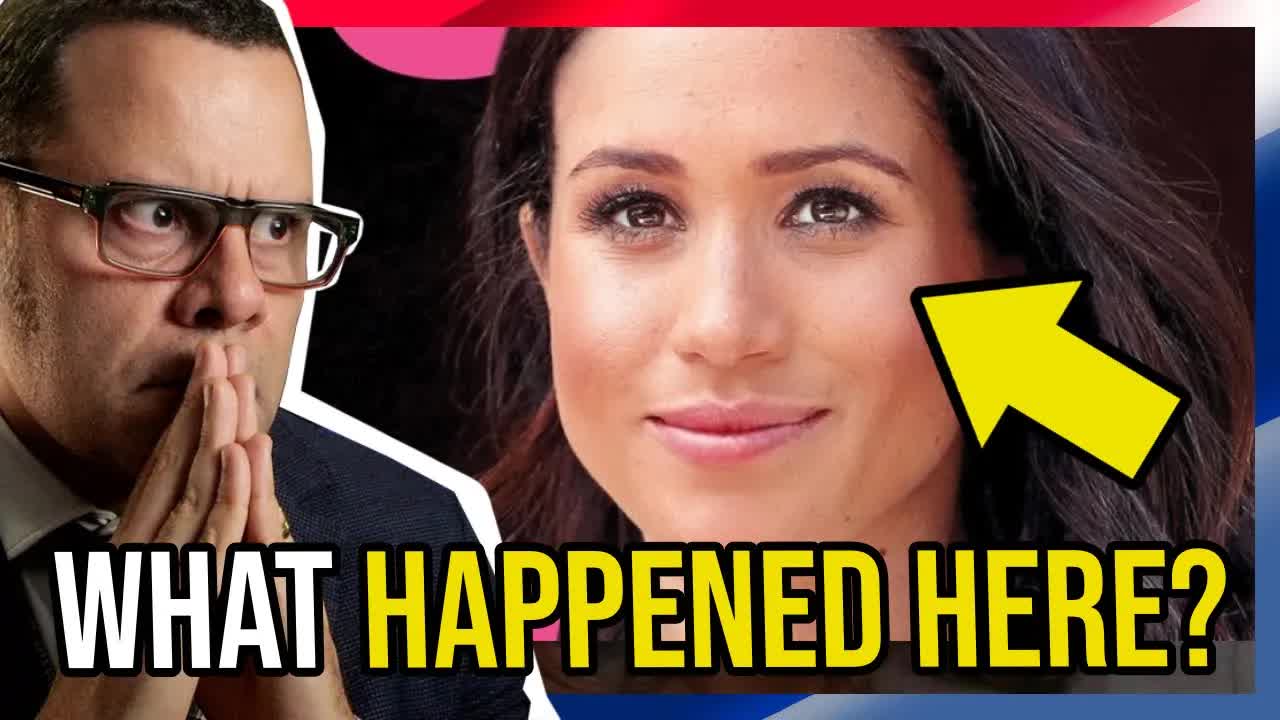In the latest buzz surrounding Meghan Markle, a new cover from US Weekly has caught the attention of fans and critics alike.
Jesús Enrique Rosas, known as the Royal Rogue, dove into the details, questioning the authenticity of the image that features the Duchess of Sussex.
With his keen eye for detail, Rosas expressed confusion over what he perceived as a significant alteration to her appearance.
Upon examining the cover closely, he noted that Meghan’s face appeared unusually square, reminiscent of a Picasso painting rather than her naturally oval shape.
This observation led him to wonder whether her features had been digitally manipulated, sparking further speculation about the intentions behind the portrayal.
He remarked on her traditionally strong jawline but insisted that the image did not accurately reflect her true likeness.
Rosas also pointed out the peculiar shine in Meghan’s eyes, prompting questions about what she might be gazing at.
He suggested that this could be a result of media outlets attempting to troll her, as he believes some publications harbor biases against her.
He speculated that this cover might be part of a broader trend of negative portrayals aimed at undermining her image.
Interestingly, Rosas clarified that the image circulating online was not the actual cover of the magazine.
Instead, he revealed that the real cover, featuring Prince William, carries a release date of September 2, 2024.
This discrepancy raised eyebrows and fueled suspicions about the authenticity of the promotional material released by US Weekly.
As Meghan prepares to launch her lifestyle brand and a new Netflix series, the timing of this cover seems strategic.
However, Rosas questioned the effectiveness of such PR efforts, suggesting that they might be too hasty, especially following her recent trip to Colombia.
He implied that it would have been wiser to wait until the buzz from her travels had settled before making such a high-profile announcement.
The Royal Rogue criticized the narrative surrounding Meghan’s journey, particularly the idea that she is still “moving on from the pain of the past.”
He found it puzzling that this theme continues to resurface years after her departure from royal duties, raising questions about her ongoing relevance in the public eye.
Rosas also took aim at the label of “lifestyle mogul,” arguing that it feels exaggerated given Meghan’s limited accomplishments in that arena so far.
He speculated that the magazine cover was pre-arranged and that Meghan’s projects, including her cooking show, have faced numerous setbacks, ultimately leading to empty promises.
He noted that despite claims of progress, there has been little evidence to support the success of her ventures.
The absence of teasers or behind-the-scenes glimpses from her cooking show only adds to the skepticism surrounding her brand.
Moreover, Rosas highlighted the irony of Meghan and Harry’s focus on issues like misinformation and online bullying, given their own experiences with public scrutiny.
He argued that their credibility on these topics is questionable, considering their history with media backlash.
In a broader context, Rosas pointed out that both Meghan and Harry seem to be mirroring the royal family’s activities in an attempt to remain relevant.
He suggested that they should carve out their own identities instead of continually referencing their royal past, which he believes is becoming increasingly irrelevant.
Finally, he criticized the magazine’s portrayal of Meghan, suggesting that better angles exist that could have presented her in a more favorable light.
He concluded with a call for readers to share their thoughts on the matter, inviting a discussion on the ongoing saga of Meghan Markle and her portrayal in the media.
With the ongoing scrutiny of Meghan’s public persona and business endeavors, it remains to be seen how she will navigate the complexities of her brand while maintaining her desired image in a rapidly changing media landscape.
Related Stories

